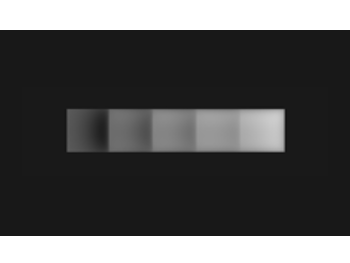
A model of lightness computation by the human visual system is described and simulated. The model accounts to within a few percent error for the large perceptual dynamic range compression observed in lightness matching experiments conducted with Staircase Gelb and related stimuli. The model assumes that neural lightness computation is based on transient activations of ON- and OFF-center neurons in the early visual pathway generated during the course of fixational eye movements. The receptive fields of the ON and OFF cells are modeled as difference-of-gaussian functions operating on a log-transformed image of the stimulus produced by the photoreceptor array. The key neural mechanism that accounts for the observed degree of dynamic range compression is a difference in the neural gains associated with ON and OFF cell responses. The ON cell gain is only about 14 as large as that of the OFF cells. ON and OFF cell responses are sorted in visual cortex by the direction of the eye movements that generated them, then summed across space by large-scale receptive fields to produce separate ON and OFF edge induction maps. Lightness is computed by subtracting the OFF network response at each spatial location from the ON network response and normalizing the spatial lightness representation such that the maximum activation within the lightness network always equals a fixed value that corresponds to the white point. In addition to accounting for the degree of dynamic range compression observed in the Staircase Gelb illusion, the model also accounts for change in the degree of perceptual compression that occurs when the spatial ordering of the papers is altered, and the release from compression that occurs when the papers are surrounded by a white border. Furthermore, the model explains the Chevreul illusion and perceptual fading of stabilized images as a byproduct of the neural lightness computations assumed by the model.
Michael E. Rudd, "Modeling Lightness and Color Perception of High Dynamic Range Stimuli" in Electronic Imaging, 2024, pp 212-1 - 212-6, https://doi.org/10.2352/EI.2024.36.11.HVEI-212
 Find this author on Google Scholar
Find this author on Google Scholar Find this author on PubMed
Find this author on PubMed